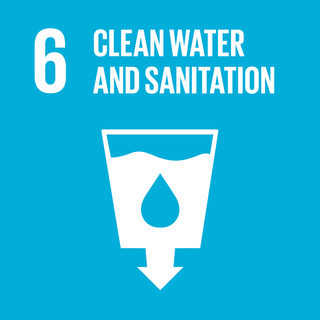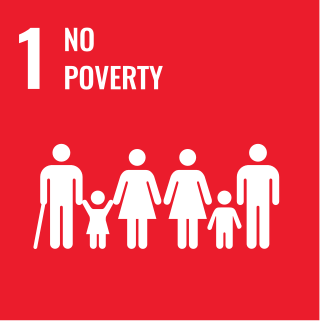Related Research Articles

In ancient times, Maldives were renowned for cowries, coir rope, dried tuna fish, ambergris (maavaharu) and coco de mer (tavakkaashi). Local and foreign trading ships used to load these products in the Maldives and bring them abroad.

The poverty threshold, poverty limit, poverty line, or breadline is the minimum level of income deemed adequate in a particular country. The poverty line is usually calculated by estimating the total cost of one year's worth of necessities for the average adult. The cost of housing, such as the rent for an apartment, usually makes up the largest proportion of this estimate, so economists track the real estate market and other housing cost indicators as a major influence on the poverty line. Individual factors are often used to account for various circumstances, such as whether one is a parent, elderly, a child, married, etc. The poverty threshold may be adjusted annually. In practice, like the definition of poverty, the official or common understanding of the poverty line is significantly higher in developed countries than in developing countries.

This page compares the sovereign states of Europe on economic, financial and social indicators.

The Human Development Report (HDR) is an annual Human Development Index report published by the Human Development Report Office of the United Nations Development Programme (UNDP).

Poverty in India remains a major challenge despite overall reductions in the last several decades as its economy grows. According to an International Monetary Fund paper, extreme poverty, defined by the World Bank as living on US$1.9 or less in purchasing power parity (PPP) terms, in India was as low as 0.8% in 2019, and the country managed to keep it at that level in 2020 despite the unprecedented COVID-19 outbreak. According to World Bank, extreme poverty has reduced by 12.3% between 2011 and 2019 from 22.5% in 2011 to 10.2% in 2019. A working paper of the bank said rural poverty declined from 26.3% in 2011 to 11.6% in 2019. The decline in urban areas was from 14.2% to 6.3% in the same period.The poverty level in rural and urban areas went down by 14.7 and 7.9 percentage points, respectively. According to United Nations Development Programme administrator Achim Steiner, India lifted 271 million people out of extreme poverty in a 10-year time period from 2005–2006 to 2015–2016. A 2020 study from the World Economic Forum found "Some 220 million Indians sustained on an expenditure level of less than Rs 32 / day—the poverty line for rural India—by the last headcount of the poor in India in 2013."

Energy poverty is lack of access to modern energy services. It refers to the situation of large numbers of people in developing countries and some people in developed countries whose well-being is negatively affected by very low consumption of energy, use of dirty or polluting fuels, and excessive time spent collecting fuel to meet basic needs. Today, 759 million people lack access to consistent electricity and 2.6 billion people use dangerous and inefficient cooking systems. Energy poverty is distinct from fuel poverty, which primarily focuses solely on the issue of affordability.

Poverty is measured in different ways by different bodies, both governmental and nongovernmental. Measurements can be absolute, which references a single standard, or relative, which is dependent on context. Poverty is widely understood to be multidimensional, comprising social, natural and economic factors situated within wider socio-political processes. The capabilities approach argues that capturing the perceptions of poor people is fundamental to understanding poverty.
Although for many decades, it was customary to focus on GDP and other measures of national income, there has been growing interest in developing broad measures of economic well-being. National and international approaches include the Beyond GDP programme developed by the European Union, the Better Lives Compendium of Indicators developed by the OECD, as well as many alternative metrics of wellbeing or happiness. One of the earliest attempts to develop such an index at national level was Bhutan's Gross National Happiness Index and there are a now a number of similar projects ongoing around the world, including a project to develop for the UK an assessment of national well-being, commissioned by the Prime Minister David Cameron and led by the Office for National Statistics.

In 2021, official government statistics reported that the Philippines had a poverty rate of 18.1%,, significantly lower than the 49.2 percent recorded in 1985 through years of government poverty reduction efforts. From 2018 to 2021, an estimated 2.3 million Filipinos fell into poverty amid the economic recession caused by the COVID-19 pandemic.
The poverty gap index is a measure of the degree of poverty. It is defined as extent to which individuals on average fall below the poverty line, and expresses it as a percentage of the poverty line.

The United Nations created 17 world development goals call the Sustainable Development Goals (SDGs). They were created in 2016 with the aim of "peace and prosperity for people and the planet, now and into the future."
Extreme poverty is defined as living on less than US$2.50 purchasing power parity. Uganda has made significant progress in eradicating poverty and achieved the first millennium development goal of halving the number of people in extreme poverty. Uganda was listed as the 9th most successful country in Africa as regards poverty eradication. The percentage of Ugandans living in absolute poverty has been on a substantial decline, and the finance ministry in the country projected that the extreme poverty level will be reduced to 10% in the future. This success has been attributed to the deliberate efforts to combat poverty in the country by numerous national strategies that are explained below.

Sustainable Development Goal 6 is about "clean water and sanitation for all". It is one of the 17 Sustainable Development Goals established by the United Nations General Assembly in 2023. According to the United Nations, the goal is to: "Ensure availability and sustainable management of water and sanitation for all." The goal has eight targets to be achieved by 2030. Progress toward the targets will be measured by using eleven indicators.

Sustainable Development Goal 16 is one of the 17 Sustainable Development Goals established by the United Nations in 2015, the official wording is: "Promote peaceful and inclusive societies for sustainable development, provide access to justice for all and build effective, accountable and inclusive institutions at all levels". The Goal has 12 targets and 23 indicators.

Sustainable Development Goal 10 is about reduced inequality and is one of the 17 Sustainable Development Goals established by the United Nations in 2015. The full title is: "Reduce inequality within and among countries".

Sustainable Development Goal 2 aims to achieve "zero hunger". It is one of the 17 Sustainable Development Goals established by the United Nations in 2015. The official wording is: "End hunger, achieve food security and improved nutrition and promote sustainable agriculture". SDG 2 highlights the "complex inter-linkages between food security, nutrition, rural transformation and sustainable agriculture". According to the United Nations, there are around 690 million people who are hungry, which accounts for slightly less than 10 percent of the world population. One in every nine people goes to bed hungry each night, including 20 million people currently at risk of famine in South Sudan, Somalia, Yemen and Nigeria.

Sustainable Development Goal 1, one of the 17 Sustainable Development Goals established by the United Nations in 2015, calls for the end of poverty in all forms. The official wording is: "No Poverty". Member countries have pledged to "Leave No One Behind": underlying the goal is a "powerful commitment to leave no one behind and to reach those farthest behind first".
References
- 1 2 "World Poverty Clock" . Retrieved September 1, 2017.
- ↑ Kharas, Homi (May 2017). "Making Everyone Count: A Clock to Track Poverty in Realtime". Brookings Institution Global Economy and Development Papers.
- ↑ "Africa and the World Poverty Clock". Brookings Institution Working Papers. Retrieved 31 August 2017.
- ↑ ndemo, bitagne (August 14, 2017). "New groundbreaking ways of measuring economic progress". The Nation (Kenya). Retrieved August 31, 2017.
- ↑ Weller, Chris. "An economist says 66 countries could end poverty by giving their citizens free money". Business Insider. Retrieved 30 March 2021.
- ↑ Brookings (2017). Making Everyone Count: A Clock to Track Poverty in Realtime. Available at: https://www.brookings.edu/blog/future-development/2017/05/10/making-everyone-count-a-clock-to-track-world-poverty-in-real-time/
- ↑ "World Poverty Clock: Pointers for India". Free Press Journal. Retrieved September 1, 2017.
- ↑ U.S. Census Bureau. Population Clock Available at: https://www.census.gov/popclock/